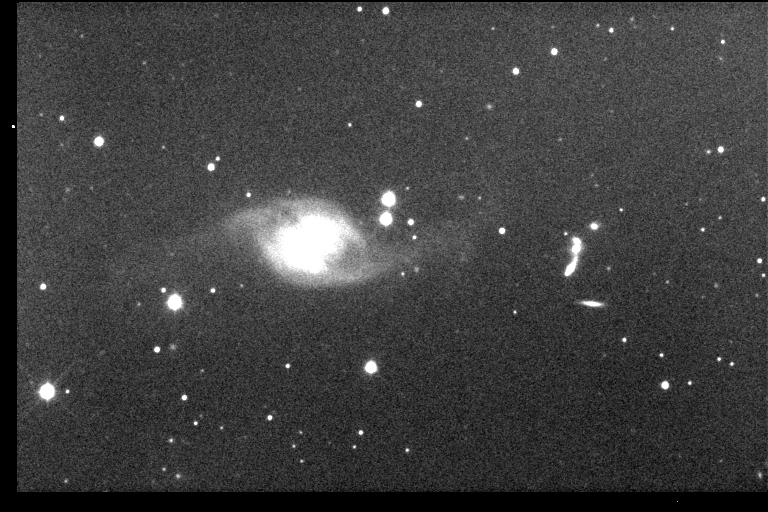Back
My flat frames have fringing, what can I do ?
Fringing on flat frame
The first flat frames that I used to calibrate my CCD pictures have been taken with the usual method:
- acquisitions with the camera mounted on the telescope, focused, when the sky is not completely dark
(at dusk or dawn), and with a slight move between each picture so that the stars are not exactly at the same position;
- I remove the offset from these measurements (and eventually I also correct for the thermal signal, scaled to the right
integration time)
- I combine all pictures using a method that rejects the stars (median or sigma clipping).
After these three steps, here is what the Audine camera typically gives:

The strong features on the right side of the flat frame, that I attribute to fringing in the CCD sensor
(but this must be confirmed), are slightly perturbating the CCD images during the calibration.
This can be seen in the picture below
(the thresholds have been adapted to emphasize the effect ; this is NGC 3718).

Other flat measurement
The source of all our problems is the fact that the fringes have a different amplitude
for the flat frames and for the galaxy pictures. If the fringes were exactly the same in both case,
then a simple calibration would correct everything.
Probably, the origin of the fringe variation is the different spectral distribution
between the sky illumination at dusk (rather blue due to Rayleigh scattering of Sun light); and during the night (with more
contributions from the yellow of sodium lights due to light pollution).
If this is correct, to get a flat frame with less fringes I need to measure a flat with a more yellow source.
To do it I installed the following optical setup in my apartment:
- the telescope tube was horizontal, in a completely dark room
- the door of this dark room was opened towards my living-room
- in the living room I used a tungsten lamp (light bulb) behind a A3 sheet
- I also used a A3 sheet in front of the telescope tube
The final setup looked light this. This is the best one I found, after several attempts:

Here is the flat that I obtained, the fringes are now much weaker.
Some vertical stripes also start to appear, which were not present before. I presume
that they are due to a bad cleaning of the CCD optical window, and that they show up due to the new
spectral distribution of the illuminating source.

Fringe calculation
The problem is that flat measurements in the apartment cannot be used for calibration.
There are always small differences between a real sky illumination,
and what you can best achieve in your leaving-room.
This situation becomes obvious if I make the difference between the two flats
(both normalized at 10000 ADU). The flat difference is shown below (first flat minus second one to see the fringes);
a constant offset of 10000 ADU has been added to the difference so that the level lies in the same range,
and the threshold have a similar setting as for the pictures above.
What is interesting in this picture is that it contains all the information we are looking for about the fringes.
But there is also a smooth 2D distribution that represent the difference in illumination between the two flats
(which is maximum at the edges, where the picture of the flats difference is more dark).
This 2D distribution can be subtracted with the IRIS function "remove gradient (polynomial fit)".

After this correction, we obtain the fringes:

Corrected flat
The calculated fringes can then be subtracted from the initial flat. As can be seen below, the resulting flat picture
has some vertical features but as we will see the result on the final galaxy picture
is nevertheless improved. I believe that these vertical features are indeed required for a good flat calibration:

And here is the final galaxy picture. The improvement is clear with respect to the initial galaxy. The sky background is really more uniform.
This could still be improved, as the background is a little dark on the right bottom but I don't really see how to do it at the moment.
So I will keep my "improved flat" like this for the time being.

And with the normal threshold settings:
